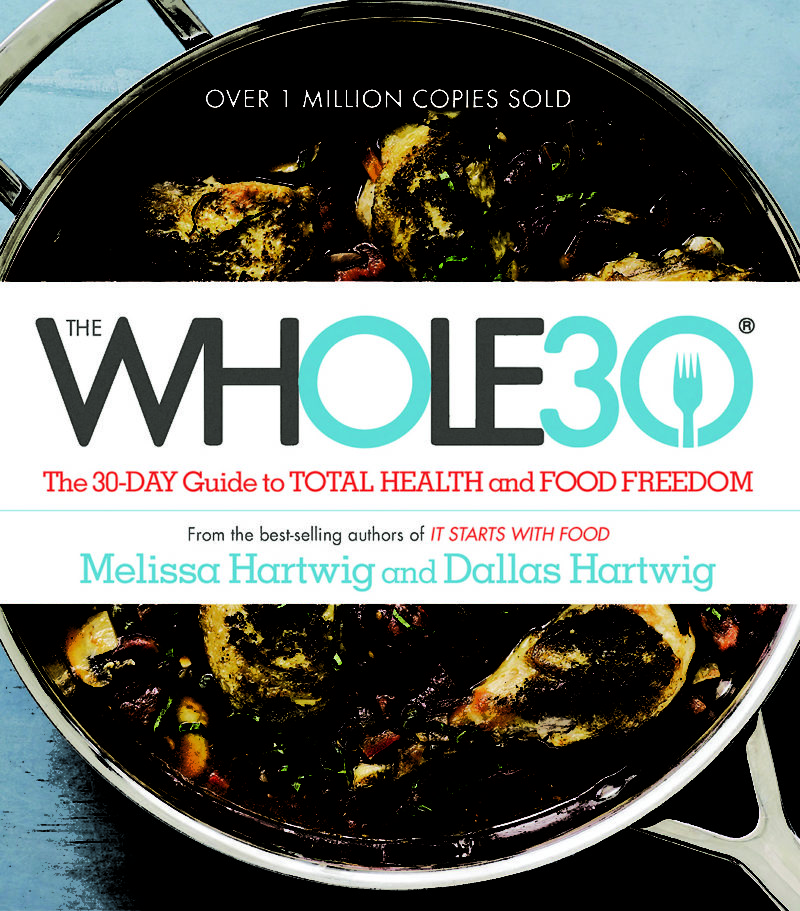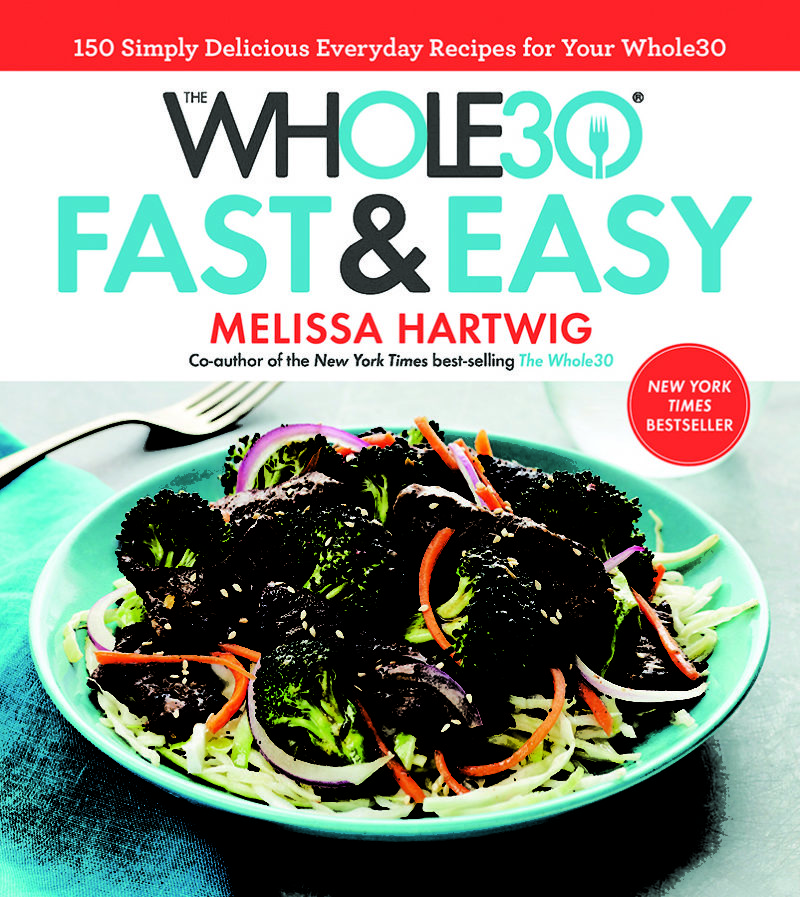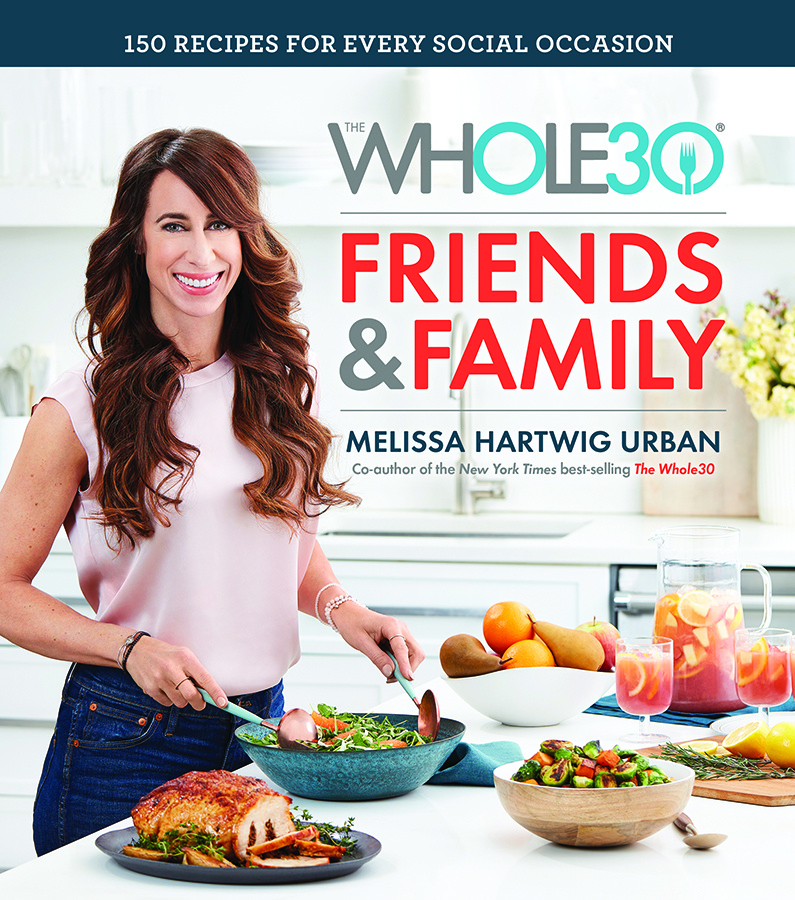To this end, there is no cheating allowed. To quote Hartwig: “This is not hard. Don’t you dare tell us this is hard. Fighting cancer is hard. Birthing a baby is hard. Drinking your coffee black is not hard.” On “slipping up,” she says: “Don’t even consider the possibility of a ‘slip.’ Unless you physically tripped and your face landed in a pizza, there is no ‘slip.’ You make a choice to eat something unhealthy.” Don’t cheat, don’t slip. Why? Because then the countdown resets, and dieters have to start again at day one.
Whole30 Basics: The Dos and Don’ts
Don’t:- Eat sugar—real, artificial, added, inherent, nothing. No maple syrup, honey, agave nectar, coconut sugar, stevia, Splenda, xylitol, nothing.
- Consume alcohol, even for cooking. Also, no tobacco products.
- Eat grains, whether heirloom or otherwise, whether not- technically-grains like quinoa or otherwise. No grains in the form of bran, germ, or starch.
- Eat legumes: soy sauce, edamame, lecithin, beans of any kind, peanuts, chickpeas, or others not listed.
- Consume dairy.
- Consume carrageenan, MSG, or sulfites.
- Eat baked goods, junk food, or treats, even if they’re made only with approved ingredients. Hartwig lists pancakes, waffles, bread, tortillas, pizza crust, alternative flour pastas, ice cream, commercially-prepared potato or tortilla chips, or French fries. “These are the same foods that got you into health-trouble in the first place,” Hartwig says, “and a pancake is still a pancake, even if it’s made with coconut flour.”
- Eat moderate portions of meat, seafood, and eggs.
- Eat lots of vegetables and some fruit.
- Eat plenty of natural fats.
- Flavor with herbs, spices, and seasonings.
- Eat foods with very few ingredients, or even no ingredients—whole and unprocessed foods are the holy grail.
- Ghee, the only source of dairy allowed.
- Fruit juice—as Hartwig says, “We have to draw the line somewhere,” so fruit juice can be used as a natural sweetener or stand-alone ingredient.
- Green beans, sugar snap peas, and snow peas—technically legumes, still allowed.
- Vinegar is allowed, excepting malt vinegar, which contains gluten.
- Coconut aminos are acceptable, even if they contain coconut nectar or coconut syrup.
- Salt—which, Hartwig notes on the website, contains sugar, making this the only exception to the “no added sugars” rule.
That being said, people with families, people with stressful jobs, or people with minimal kitchen time will struggle. Here’s the knowledge you’ll need to help them out.
Whole30 Resources
The diet experts behind Whole30 do their best to make the diet accessible, whether or not dieters want to buy the books. Send customers to www.whole30.com/pdf-downloads/ for a dining guide, a guide to sneaky sugars, a guide to common additives, specialty shopping lists, a meal template, and a pantry stocking guide. www.realplans.com/whole30/ is a for-pay meal planning app that allows users to create personalized meal plans, even after they finish the diet and figure out that they can actually eat dairy or grains.Key to Success
Despite Hartwig’s assertions that the diet is not hard, not all who have tried Whole30 agree. The first 10 days, according to Gina Eykemans, a blogger at thekitchn.com, will be difficult: “I would feel great, and then the next day I would feel tired, achy, and bloated…If you’re doing this after eating a lot of sugar and processed food, your symptoms might be a bit more severe.” Here, a look at some strategies that can help ward off concerns and make the diet easier to follow.Fostering a happy gut Eykemans References the Whole30 Cookbook, noting that a radical dietary change shifts gut bacteria—which can certainly affect mood and more. For dieters feeling the effects, probiotics and prebiotics may help them get through. In terms of prebiotics, onions, garlic, and mushrooms are all Whole30-approved. Regarding probiotics, Hartwig notes on www.whole30.com that she is not a doctor—and that it’s important to get a doctor’s approval before starting any new health regimen, including dietary changes or supplements—but she shares the advice of Dr. Michael Ruscio, who recommends fermented foods (sauerkraut, kombucha, or unsweetened coconut milk yogurt) and a low dose of each of these: Lactobacillus and Bifidobacterium predominated blends; Saccharomyces Boulardii; soil based probiotics that contain various strains of Bacillus species.
Dieters may be interested in a product like Kyo-Dophilus or Pure Essence’s PureBiotics—free of dairy, gluten, soy, preservatives, and other non-Whole30 ingredients, these products can help keep digestive systems functioning well.
Outsmarting hunger and sugar In an article for Health.com, Julia Naftulin shared that the sugar withdrawal in week one can be terrible. The Whole30 website repeatedly asserts that the hardest situation to deal with will be the one for which your customer is unprepared. Being hungry without a Whole30-approved snack on hand, or getting tired of cooking and cleaning up after three meals a day, are both dangerous situations for a dieter. The best way, therefore, that you can help your Whole30 customer is by ensuring that they can prepare for these situations.
Stock plenty of Whole30-approved snacks—a list of brands can be found at https://whole30.com/whole30-approved/. Brands include: Medlie, a collagen-infused vegetable drink that comes in flavors like Coconut Mint; Brooklyn Biltong, which makes seasoned and dried beef snacks; DNX bars or RXBARS, both of which are protein-packed, and RXBARS contain carbs, too, making them a complete mini-meal.
Snacks containing proteins and fats are ideal: While dieters can usually find fresh fruit, grab-and-go protein snacks are harder to come by, and protein will keep them full, happy, and on track. Save your customers the annoyance of reading labels, and call out Whole30- compliant foods with bright, visible signage: “Don’t fall off the Whole30 wagon—keep these in your office/car/pantry” (yes, pantry—as Hartwig notes, particularly for those with family members who don’t diet, being at home and hungry is dangerous).
In terms of meals, if your store offers any kind of ready-to-eat meals or has a hot bar, this is your time to shine. Chicken or tuna salads, beef and broccoli (without soy sauce), hard-boiled eggs, chicken with mushrooms, pork and apples—there are plenty of foods that are Whole30-compliant. You could even have your products licensed as Whole30 Approved, but if you’d rather skip that process, marketing that involves listing all the ingredients and noting that the foods are dairy-free, grain-free, and made with whole foods should act like a beacon to Whole30 dieters—and should make them devoted customers, as they’ll know they can stop in on those nights when prepwork, cooking, and cleaning feel like too much.
Good Health Reads:
Melissa Hartwig has made it easy to give your customers a Whole30 approved cookbook: She’s written several.
 Start out with The Whole30: The 30-Day Guide to Total Health and Food Freedom by Melissa Hartwig and her husband, Dallas Hartwig (Houghton Mifflin Harcourt, 2015). An Amazon Best Seller, this cookbook offers a step-by-step plan to break unhealthy habits and reduce cravings. It’s the starter book for this diet.
Start out with The Whole30: The 30-Day Guide to Total Health and Food Freedom by Melissa Hartwig and her husband, Dallas Hartwig (Houghton Mifflin Harcourt, 2015). An Amazon Best Seller, this cookbook offers a step-by-step plan to break unhealthy habits and reduce cravings. It’s the starter book for this diet. The Whole30 Fast & Easy Cookbook: 150 Simply Delicious Everyday Recipes for Your Whole30 by Melissa Hartwig (Houghton Mifflin Harcourt, 2017) might be the cookbook of choice for the customers who have already done their research, and are making use of online resources. This doesn’t have the same step-by-step breakdown, but is a great resource for busy parents or customers who are always on-the-go.
The Whole30 Fast & Easy Cookbook: 150 Simply Delicious Everyday Recipes for Your Whole30 by Melissa Hartwig (Houghton Mifflin Harcourt, 2017) might be the cookbook of choice for the customers who have already done their research, and are making use of online resources. This doesn’t have the same step-by-step breakdown, but is a great resource for busy parents or customers who are always on-the-go. As of October, you’ll be able to point your customers towards another helpful guide: The Whole30 Friends & Family: 150 Recipes for Every Social Occasion by Melissa Hartwig (Houghton Mifflin Harcourt, 2019). Your customers can host a gathering or contribute a dish to someone else’s party without risk of falling off the wagon, and without worrying about whether or not their guests will enjoy the food.
As of October, you’ll be able to point your customers towards another helpful guide: The Whole30 Friends & Family: 150 Recipes for Every Social Occasion by Melissa Hartwig (Houghton Mifflin Harcourt, 2019). Your customers can host a gathering or contribute a dish to someone else’s party without risk of falling off the wagon, and without worrying about whether or not their guests will enjoy the food.Exit Strategy
As day 30 closes in, your customers should be prepared for boredom: Naftulin wrote that week four was horribly boring, and that the second her 30 days ended, she ate a bowl of plain white rice with absolute joy. Food-bored customers should keep themselves busy plotting their exit strategy: Naftulin notes that the way to ease out of the diet is carefully. One food group at a time. Prep your customers with white or brown rice, gluten-free carbs, and natural sugars, which they should eat one at a time, keeping track of which ones trigger a negative response. Naftulin notes that, while she can eat dairy and gluten (even though she’d been lactose intolerant pre-diet), they make her feel bloated and make her sleep worse—so she eats less of those things than she did pre-diet.This diet isn’t intended to be maintained permanently. It’s a 30-day reset. At the end of it, your customers should spend a week or two reintroducing themselves to foods they’ve cut out, after which they should have a better idea of how foods affect them. Whole30 isn’t a lifestyle; it’s just intended to help your customers find out what lifestyle they’re looking for.
Eykemans touches on another important point: This isn’t, necessarily, a weight-loss diet. She did lose weight, as do many when they cut out sugars and processed foods, but Eykemans and Hartwig both emphasize “non-scale successes,” and one of the diet’s rules is actually not to so much as step on a scale over the course of 30 days. Customers looking to drop pounds may find that this is not the diet for them—but they might also find that pursuing health is more rewarding than pursuing weight loss. WF









